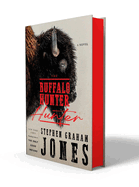
| Publisher: | Saga Press/Simon & Schuster | |
| Genre: | Horror, Indigenous, Fantasy, General, Fiction, Historical | |
| ISBN: | 9781668075081 | |
| Pub Date: | March 2025 | |
| Price: | $29.99 |
| Fiction |
by Stephen Graham Jones
A long-hidden diary in which a Lutheran pastor records a strange confession reveals a mysterious horror with repercussions that span centuries in The Buffalo Hunter Hunter, the chilling and original vampire novel from Stephen Graham Jones (The Only Good Indians; Don't Fear the Reaper).
In 2012, Etsy Beaucarne is struggling to publish a book that will earn her tenure when the diary of her great-great-great grandfather Arthur, who vanished in 1912, is discovered in a wall. As documented in the diary, Arthur's small Montana town is shocked by the discovery of an exsanguinated corpse. Soon after, a Blackfeet stranger appears among Arthur's congregation during the Sunday service and asks to make his confession. In a series of conversations, the stranger, named Good Stab, recounts a story that begins with a massacre and his encounter with a creature he calls the Cat Man, after which he can consume only blood. As the confession continues and more bodies appear, it becomes clear that Good Stab is in this specific church for a purpose, and even in Etsy's day, the horrors of the American West's past have not been laid to rest.
Jones has built a Native American revenge narrative on the scaffolding of a highly inventive approach to vampire lore, all the more horrifying for the logic that grounds it. Arthur's diary entries and the history the Blackfeet stranger tells him would be gripping enough on their own, but their ramifications for Etsy only heighten the stakes. Fans of westerns and vampires should snatch this up. --Kristen Allen-Vogel, information services librarian at Dayton Metro Library
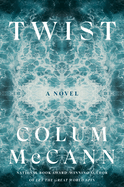
| Publisher: | Random House | |
| Genre: | Psychological, Family Life, General, Literary, Fiction | |
| ISBN: | 9780593241738 | |
| Pub Date: | March 2025 | |
| Price: | $28 |
| Fiction |
by Colum McCann
Colum McCann's Twist is a haunting portrait of "a chameleon, a charlatan, a con man," painted by a narrator whose own existence in midlife provides a meaningful counterpoint. Invoking Conrad's Heart of Darkness, McCann delivers this utterly contemporary story with his customary intelligence and graceful style.
"Struggling novelist and occasional playwright" Anthony Fennell leaves his Dublin home to research a piece of long-form journalism. He boards a Belgian-owned vessel whose crew is charged with repairing an undersea cable in a canyon four kilometers below the ocean surface off the African coast. But Fennell has no hint of the mystery he'll need to untangle, a puzzle that revolves around John A. Conway, veteran chief of the mission to fix the vital communications link that stretches from London to Cape Town.
Just as the crew is about to complete their assignment, Conway, whose eventual death is announced early in the novel, vanishes, leaving Fennell with only the "shards of the broken things to put back together again." As he attempts to unearth Conway's story, Fennell muses about the missteps in his own life--his heavy drinking, divorce, and estrangement from his teenage son who now lives with his mother in Chile but with whom he's trying to reconnect.
"Between fact and fiction lie memory and imagination," Fennell observes. "Within memory and imagination lies our desire to capture at least some essence of the truth, which is, at best, messy." That's an eloquent benediction for a story that, at its heart, reveals the frequent elusiveness of that truth and the often unbridgeable gap in any attempt fully to understand another. --Harvey Freedenberg, freelance reviewer
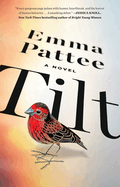
| Publisher: | Marysue Rucci/Simon & Schuster | |
| Genre: | Women, Disaster, Literary, Fiction | |
| ISBN: | 9781668055472 | |
| Pub Date: | March 2025 | |
| Price: | $27.99 |
| Fiction |
by Emma Pattee
In climate journalist and fiction writer Emma Pattee's nuanced debut novel, Tilt, an expectant mother must make a harrowing and illuminating trek across her hometown of Portland, Ore., which has been distorted into a disaster zone by a catastrophic earthquake.
At nine months, Annie is tired of being pregnant. She's reaching her breaking point in IKEA, of all places, while doing some last-minute shopping for a crib. But before she can snap, something else does. Next thing she knows, she's on the ground under a pile of shelves, and the world around her has changed irrevocably. When Annie emerges from IKEA, she finds her familiar city has been transformed into an anarchic landscape. Now, she must traverse the city to find her husband, as she confronts loss and grief; unexpected and even desperate hope; and her own disappointments and anxieties along the way.
Tilt may sound like a nightmare for expectant mothers; yet Pattee's surprisingly tender portrait of motherhood is enough to buoy even the most fearful reader. What's more, even faced with some serious doom and gloom, Annie manages to be funny, her dry humor at once acceptable and wrenching in its attempts to push her through turmoil. With Annie at its helm, this all-in-one-day survival story manages to be thrilling and thoughtful, distressing and joyful.
As Annie's journey is facilitated and interrupted by other fiercely determined mothers and even a few bloodthirsty teenagers, readers can't help but think that for all its horror, this post-quake world may not be that different from the chaotic landscapes women often must find not just the will but the determination to survive. --Alice Martin, freelance writer and editor
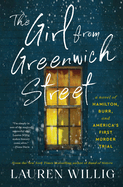
| Publisher: | Morrow | |
| Genre: | Mystery & Detective, Legal, Colonial America & Revolution, Thrillers, Fiction, Historical | |
| ISBN: | 9780063306110 | |
| Pub Date: | March 2025 | |
| Price: | $30 |
| Fiction |
by Lauren Willig
Lauren Willig has written a mesmerizing novel based on a centuries-old true crime: the murder of 22-year-old Elma Sands at the very end of 1799, and the first murder trial in the new United States. The Girl from Greenwich Street recounts the aftermath of the discovery of Elma's body in a Manhattan well. Elma came from a family of well-known and prominent Quakers, and when Levi Weeks, a boarder in Elma's family's home, was arrested for her murder, it rocked New York City. Levi's wealthy brother hired Henry Brockholst Livingston and Aaron Burr to defend him, and they were joined by none other than Alexander Hamilton, while future New York City mayor Cadwallader Colden represented the prosecution.
Willig (The English Wife; Band of Sisters), much like Sarah Koenig in the season one of Serial, uses the trial's original transcripts to deftly capture the nuances of a case that has remained unsolved for more than two centuries. Willig humanizes every character, including Elma, whom she shows as determined when she was alive despite the defense's attempt to portray her as a flibbertigibbet; Levi, who would continue to be hounded even after the acquittal Livingston, Burr, and Hamilton were able to get him; inevitably competitive Burr and Hamilton; and Elias Ring, Elma's shifty cousin-in-law. Perfect for fans of true-crime podcasts, historical fiction, or anyone who still has "Non-Stop" from Hamilton stuck in their heads, The Girl from Greenwich Street is an immersive historical novel. --Jessica Howard, former bookseller, freelance book reviewer
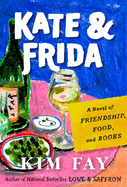
| Publisher: | Putnam | |
| Genre: | Friendship, Coming of Age, 20th Century - General, Fiction, Historical | |
| ISBN: | 9780593852385 | |
| Pub Date: | March 2025 | |
| Price: | $28 |
| Fiction |
by Kim Fay
This epistolary novel of books, cuisines, and hopes is a charming homage to friendship and correspondence. But Kate & Frida also envelops the protagonists' wider world as they support each other through confrontations with loss.
Fans of Kim Fay's 2022 novel, Love & Saffron, will delight in another story told through letters. That book was set in 1960s Seattle, Wash., and Los Angeles, Calif., while Kate and Frida write from Seattle and Paris, France, in the early 1990s. A heartwarming link between the two novels enhances the reading experience, but each stands satisfyingly on its own.
Frida Rodriguez, a 20-something Californian in Paris hoping to become a "War Journo Dame," writes to Seattle's Puget Sound Book Company to order a book by 20th-century war correspondent Martha Gellhorn. Aspiring novelist and bookseller Kate Fair adds a note to the package, beginning a regular correspondence that becomes a deep friendship. In detailed letters, adventurous Frida and appreciative Kate--both writers at heart--encourage each other to pursue their dreams and discuss plenty of books. They also share a love of food, like Kate's snickerdoodles and Frida's pursuit of buttery French cheeses. When Frida goes to Sarajevo during the 1992 breakup of Yugoslavia seeking a story to report, her letters of the fighting and destruction inspire Kate to send children's books for the civilians. Meanwhile, Frida consoles Kate as her beloved grandfather's health declines. In letters that read like transcripts of conversations, Kate and Frida cement a friendship based on their shared philosophy: "It's the words that will last." --Cheryl McKeon, Book House of Stuyvesant Plaza, Albany, N.Y.
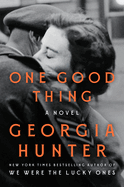
| Publisher: | Pamela Dorman Books | |
| Genre: | 20th Century - World War II & Holocaust, Fiction, Historical, Jewish | |
| ISBN: | 9781984880932 | |
| Pub Date: | March 2025 | |
| Price: | $30 |
| Fiction |
by Georgia Hunter
Georgia Hunter's gripping second novel, One Good Thing, follows Lili, a young Italian Jewish woman traversing Italy during World War II, determined to protect her best friend Esti's young son. Traveling on foot and trying to evade capture, Lili heads south toward Rome and the Allied-occupied landscape beyond.
Hunter (We Were the Lucky Ones) begins her narrative in 1940, as Lili and Esti celebrate the birth of Esti's son, Theo. The women are worried about Benito Mussolini's Racial Laws, which quickly impact both their lives. When the Germans invade their city, Esti, always the bolder of the two, convinces Lili not only to flee their home but also to join her in forging identification papers for Jews and other refugees. After a raid on the convent in Florence where they're staying, Esti--too injured to travel--urges Lili to take Theo and run.
As Lili makes her way with Theo across Italy, Hunter strikingly portrays the tension and anxiety involved in trekking long distances in secret, constantly looking over one's shoulder. Lili meets priests, nuns, Italian partisans, and others who provide aid and comfort, but she knows her safety is never guaranteed. Hunter explores the particular pain of being betrayed by one's own countrymen and depicts Lili's steadfast love for Theo and her ongoing worry for her friend.
At once a riveting wartime story and a tender tribute to friendship, One Good Thing considers the small acts of kindness and the undergirding love that can sustain people through difficult times. --Katie Noah Gibson, blogger at Cakes, Tea and Dreams
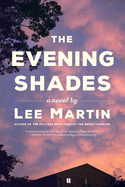
| Publisher: | Melville House | |
| Genre: | 20th Century - Post-World War II, Small Town & Rural, Literary, Fiction, Historical | |
| ISBN: | 9781685891732 | |
| Pub Date: | March 2025 | |
| Price: | $20.99 |
| Fiction |
by Lee Martin
The heartbreak of loss and the power of love intertwine in The Evening Shades, Lee Martin's suspenseful follow-up to his Pulitzer Prize finalist, The Bright Forever. The tightly, tersely crafted novel follows Henry Dees, a middle-aged man "with secrets and sins," as he escapes the Indiana town that haunts him. It roves among several narrators, including Dees, the town he leaves behind, the town he moves to, and Edith Green, the "spinster" who is "sick to death of being alone" when Dees arrives in Mt. Gilead, Ill.
Martin (The Mutual UFO Network; Late One Night) parses out details and teases with foreshadowing. "He knew something we didn't," says Tower Hill, Ind. "The night everything went wrong," Dees muses. The death of a beloved nine-year-old girl and her murderer's disappearance are undisputed, but why Dees, a soft-spoken math teacher, is harboring guilt when he flees to a new town is unclear. He meets Edith at Hutch's Sunoco station, and she spontaneously offers to rent him a room in her large colonial-style house, with its "hardwood floors and rose-patterned wallpaper." "We gave each other the gift of our listening," Edith recalls of their friendship. The mystery of Dees's part in the murder is disconcerting, even as he and Edith cautiously fall in love. Martin captures the nuances of small-town middle America in 1972, such as the Tower Hill residents who speculate about the murder and the diners at Mt. Gilead's Town Talk Cafe who gossip about Dees and Edith. Tension escalates, and in a satisfying conclusion, justice and love prevail. --Cheryl McKeon, Book House of Stuyvesant Plaza, Albany, N.Y.
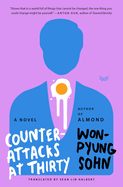
| Publisher: | HarperVia | |
| Genre: | Friendship, World Literature, Feminist, Coming of Age, Literary, Fiction, Korea | |
| ISBN: | 9780063378100 | |
| Pub Date: | March 2025 | |
| Price: | $26.99 |
| Fiction |
by Won-Pyung Sohn, trans. by Sean Lin Halbert
Counterattacks at Thirty by Won-Pyung Sohn (Almond) tells the story of a young South Korean intern unleashing her anger about social injustices. The novel lays bare the mundane but soul-crushing realities faced by millennials while providing a glimmer of hope for survival and change.
Kim Jihye is already 30 but has yet to land a permanent job in South Korea's capitalist landscape of huge conglomerate companies. She took an internship with the goal of eventually moving up the ladder, but she now understands how unlikely that will be and how corrupt the company leadership is. When Jihye's workload grows, her company hires another intern instead of promoting her to a permanent position. The new intern, Lee Gyuok, is hardworking and pleasant, and he threatens to slip past Jihye's defenses, which have kept her other co-workers at bay. Gyuok convinces Jihye and two others to join him in counterattacks: relatively harmless pranks on people like dishonest politicians and those who have wronged others. Jihye finds solidarity with the group and their small acts of rebellion, but she must eventually face her demons and decide if she wants to take control of her future and make real change for herself and society.
Jihye's evolving perspective and emotions come through vibrantly in Sohn's prose, which is depressed and matter-of-fact at the beginning and gorgeous and filled with metaphors by the end, so that when Jihye feels "a strange warmth spread through [her] chest," readers feel it, too. Bits of Jihye's psyche are revealed to readers as she explores them herself, and Sohn brilliantly portrays the despair sweeping across the globe as well as the beauty of believing that change is possible. --Dainy Bernstein, freelance reviewer
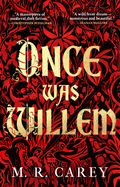
| Publisher: | Orbit | |
| Genre: | Dark Fantasy, Fantasy, Fiction, Action & Adventure, Historical | |
| ISBN: | 9780316505024 | |
| Pub Date: | March 2025 | |
| Price: | $18.99 |
| Science Fiction & Fantasy |
by M.R. Carey
"Gird yourself," cautions the narrator of the whimsical dark fantasy novel Once Was Willem by M.R. Carey (The Book of Koli; The Girl with All the Gifts). The advice is warranted; this rollicking adventure through medieval England features shape-shifters, ghosts, and one undead boy brave enough to stand against an immeasurably evil sorcerer.
Once-Was-Willem is born--the first time--in the English village of Cosham "eleven hundred and some years after the death of Christ," following a tumultuous period that sees local nobility replaced by bandits. Willem dies of a fever at age 12, and his heartbroken parents bargain with the mage Caradoc to bring him back. However, "the manner of my going away and coming back bent all things out of true," Once-Was-Willem says. His decomposed body re-forms into a monstrosity, and his parents reject him. He removes to the forest and befriends a werebear, a chimera, and a river sprite. Meanwhile, Caradoc seeks immortality, and he requires innocent lives to access an immense source of power he discovers beneath a nearby castle. The village of Cosham needs heroes, and Once-Was-Willem and his friends may be just the creatures for the job.
Omniscient first-person narrator Once-Was-Willem follows multiple plot threads seamlessly in this medieval Frankenstein story that explores themes of division, hostility, and healing. Carey writes in a voice that feels period-appropriate yet loses none of the intensity of the action and battle scenes. Brilliant character work and a world built on folk tales drawn from the Old Testament make this engrossing fantasy novel a memorable achievement. --Jaclyn Fulwood, blogger at Infinite Reads
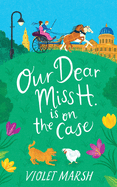
| Publisher: | Forever | |
| Genre: | Romantic Comedy, Historical - Regency, Mystery & Detective, Historical - Victorian, Romance, Fiction, Women Sleuths | |
| ISBN: | 9781538739631 | |
| Pub Date: | March 2025 | |
| Price: | $17.99 |
| Romance |
by Violet Marsh
In her fourth historical romance novel, Our Dear Miss H. Is on the Case, Violet Marsh sends her Georgian-era characters on a wildly entertaining adventure whose breakneck pace matches the speed of their daring curricle rides.
Miss Georgina Harrington, a brilliant antiquarian who must publish her work under her cousin Percy's name to be taken seriously, is elated to discover a valuable helmet in a barrow on her Essex property. Soon, however, both the helmet and Percy go missing, and Georgina heads to London to find them (while evading her brother's plans to marry her off) with help from her mischievous dog, a fluffy rooster, and Percy's annoyingly handsome best friend, Alexander.
Marsh brings her characters to the Black Sheep coffeehouse, the raucous, joyful establishment first introduced in Lady Charlotte Always Gets Her Man, with its motley but kind and whip smart assortment of owners and patrons, among them Alexander's cousins. Though Georgina is initially hesitant to trust her new friends, she gradually accepts their help, with results that prove both effective and hilarious, especially when more animals get involved. Alexander, whose father has always been ashamed of his son's clubfoot, has trust issues of his own. But as he and Georgina join forces, they open up to each other--and hope a dastardly plot against the monarchy doesn't foil their plans for romance. Fans of screwball comedies, English history, and independent women will find much to enjoy in Marsh's witty narrative--as long as they don't mind a few chicken feathers. --Katie Noah Gibson, blogger at Cakes, Tea and Dreams
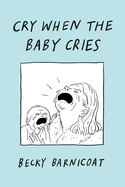
| Publisher: | Gallery Books | |
| Genre: | Family & Relationships, Parenting, Biography & Memoir, Humorous, Nonfiction, General, Comics & Graphic Novels | |
| ISBN: | 9781668048016 | |
| Pub Date: | March 2025 | |
| Price: | $29.99 |
| Starred | Graphic Books |
by Becky Barnicoat
British cartoonist Becky Barnicoat's first graphic memoir, Cry When the Baby Cries, presents quite the lachrymose cover, but readers will likely be nod-laughing as often as sharing tears. The single-page preface perfectly encapsulates what's to come: Barnicoat lies in bed as a nurse puts her crying newborn into her arms, with a reassuring, "It comes with an instruction manual, translation app, carry pouch, and 24/7 expert help and guidance." As she exits the room, the nurse adds, "LOL. Just kidding. Bye," leaving Barnicoat in shocked anguish.
For Barnicoat, motherhood--including pregnancy, labor, the first years of baby mayhem, only to do it all over again!--was nothing like the mother/child images promised in books and social media. "My baby wouldn't follow the instructions," she admits. "My babies didn't have any interest in routines, schedules, programs, milestones, or plans in general." In learning to nurture these "writhing little creatures of feelings and gas," Barnicoat had to immediately adapt to their relentless demands while chronically sleep deprived: "This book is my memory of that animal time. I hope it will relieve any shame you might feel for your tears, anger, boredom, unexpected body-fluid emissions.... It's as nature intended."
Barnicoat's emotive black-and-white pen-and-ink drawings brilliantly maintain a remarkable blend of aspiration, humor, and biting (literally) reality. Diagrams, flow charts, lists, and annotated body parts throughout could be attempts to rein in some of the tumult. Careful hand-lettered text enhances most pages, but so, too, do outbursts magnified in oversize fonts with occasional expletives. Barnicoat's honesty is brutal but so necessary. Her empathy is an undeniable, priceless gift to all mothers. --Terry Hong
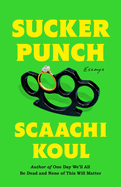
| Publisher: | St. Martin's Press | |
| Genre: | Biography & Autobiography, Form, Asian & Asian American, Memoirs, Humor, Essays | |
| ISBN: | 9781250270504 | |
| Pub Date: | March 2025 | |
| Price: | $28 |
| Starred | Biography & Memoir |
by Scaachi Koul
By her own admission, Scaachi Koul's 2017 debut, One Day We'll All Be Dead and None of This Will Matter, charted her course to marrying her now ex-husband. Her follow-up essay collection, Sucker Punch, paints a painful yet darkly humorous picture of divorce that stands on its own while also working as a companion to her first book. Koul--a senior journalist at Slate, podcast host, and contributor to publications such as the New Yorker--goes beyond a typical, linear recounting of divorce by mapping her experience onto stories about the Hindu deities that she grew up with. While none of the essays are light reads, each is accessible, if fragmented. Koul is aware of this disjointedness, asking mid-essay: "How do I tell you the story of the worst bet I ever made? Do I tell it from the end to the front, from the point where I knew how catastrophically I had failed? Or should I start it from the beginning, when I knew the least I would ever know?"
Rather than serving as a detraction, Sucker Punch's fractured parts are integral to its strength. Koul surveys a lot of ground with an unflinching gaze--whether turned inward on her own propensity to pick a fight, or outward by castigating the men who have wronged her, and examining how her mother's history of dieting damaged Koul's relationship with her own body. Ultimately, Koul learns that "walking away from a fight isn't cowardice; sometimes it's the only way to win" and wonders, despite the hurt, when she'll get to try love out again. --Kristen Coates, editor and freelance reviewer
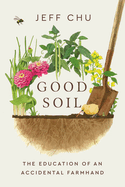
| Publisher: | Convergent Books | |
| Genre: | Biography & Autobiography, Nature, Inspiration & Personal Growth, Body, Mind & Spirit, Environmentalists & Naturalists, Memoirs, Essays | |
| ISBN: | 9780593727362 | |
| Pub Date: | March 2025 | |
| Price: | $26 |
| Starred | Biography & Memoir |
by Jeff Chu
Journalist Jeff Chu's wise, thoughtful second memoir, Good Soil, explores love, loss, complicated identities, and the power of community through his experience working on his seminary's farm. After enrolling at Princeton Theological Seminary at the age of 39, Chu took one class--and then many more--at the "Farminary," a working farm designed to provide a hands-on place for students to wrestle with spiritual questions while getting their hands (literally) dirty. Chu's time at the Farminary would prove transformative, and as he took part in its day-to-day tasks of life, he watched metaphors of growth, tending, harvest, roots, and flourishing--not to mention compost--come to life before his eyes.
Chu (Does Jesus Really Love Me?) lushly describes the community he found at the Farminary, including farm director Nate and fellow student Pearl, a Black woman whose peripatetic life had made her a self-proclaimed "child of many soils." As Chu learned the basics of planting, watering, weeding, and other essential tasks, he also began to develop a theology of compost and dirt.
Alongside Chu's work at the Farminary, he digs into the layers of his own story as the gay son of Christian Chinese immigrants. He also describes (in mouthwatering detail) the feast he prepared for friends and colleagues as his final Farminary project, and he recounts the loss of his dear friend and fellow author Rachel Held Evans (whose posthumous memoir, Wholehearted Faith, he edited).
With grace, sensitivity, and self-deprecating humor, Chu examines the question of belonging, the gifts of every season, and the continuing challenge of caring faithfully for the (literal and metaphorical) soil of one's own life. --Katie Noah Gibson, blogger at Cakes, Tea and Dreams
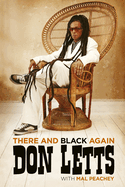
| Publisher: | Omnibus | |
| Genre: | Biography & Autobiography, Music, Rap & Hip Hop, Genres & Styles, Dance, Reggae | |
| ISBN: | 9781915841421 | |
| Pub Date: | March 2025 | |
| Price: | $20 |
| Biography & Memoir |
by Don Letts, Mal Peachey
While Don Letts isn't the most familiar name in British punk's origin story, that story would be different without him. Best known for his Big Audio Dynamite tenure and his music-centered films, including the Grammy-winning The Clash: Westway to the World (2000), Letts finally takes center stage in the entertaining and essential There and Black Again: The Autobiography of Don Letts.
Born in London in 1956, Letts was raised in multiracial Brixton by his Jamaican-born parents. He grew up listening to rock while soaking up "the 'new' music coming out of my parents' old country." After Letts saw the Who in 1971, he vowed to "become part of this world"--no small ambition for someone who couldn't sing well or play an instrument. In 1976 he was asked to DJ at a London club, where he introduced punks to reggae and wielded a Super-8mm camera ("my punk 'instrument' "); these efforts influenced and immortalized the music. In the mid-'80s, Letts joined Big Audio Dynamite, former Clash man Mick Jones's new endeavor, contributing sound effects and movie-dialogue snippets--proto-sampling that became the band's much-emulated signature.
Letts may have been a rebel, but he was no loner, and There and Black Again contains his priceless before-they-were-famous takes on fellow scene fixtures like Chrissie Hynde and Joe Strummer. Originally published in 2021, the book finds Letts conscious of his elder statesman status--"I'm at a stage in my life when I'm apparently a living, historical document"; There and Black Again is the print version. --Nell Beram, author and freelance writer
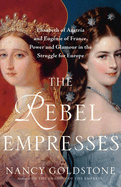
| Publisher: | Little, Brown | |
| Genre: | Biography & Autobiography, Women, Royalty, Europe, General, History, Historical | |
| ISBN: | 9780316419420 | |
| Pub Date: | February 2025 | |
| Price: | $35 |
| Biography & Memoir |
by Nancy Goldstone
No longer "attractive footnotes on the pages of history," Empresses Elisabeth of Austria and Eugénie of France receive long overdue attention in Nancy Goldstone's beguiling The Rebel Empresses. With her trademark wit and chatty prose style, Goldstone (The Rival Queens) reveals the women who married Emperor Franz Joseph and Napoleon III, respectively: two women intertwined with a 19th-century Europe that heaved with political and technological change. Elisabeth, known as "Sisi," was born to a Bavarian duke and duchess in 1837. She was adventurous, athletic, and discovered that the "suffocating rigidity" of the Austrian imperial court was equal in its miseries only to her overbearing mother-in-law, the Archduchess Sophia. Elisabeth's power, however, resided in her "popularity, especially with the lower classes," and "existed on a different plane," Goldstone writes. "Elisabeth decided in 1864 to devote herself to becoming fluent in Hungarian," a political statement that "defied the disapproval and dogma of the court"; her championing of Hungarian civil rights would lead to the power-sharing agreement known as the dual monarchy of Austria-Hungary.
In France, Spanish-born Eugénie was a "fighter" who learned power politics from her husband (as well as how to move past his serial philandering) and took on the ill-fated conquest of Mexico as her own personal project. Her keen understanding of politics and foreign affairs made Napoleon III feel comfortable naming her as regent when he led his armies to fight the Sardinian War of 1859. Goldstone alternates chapters chronicling Elisabeth's and Eugenie's particular tragedies and triumphs, gilding her studious research with lighthearted footnotes throughout. The Rebel Empresses is a rewarding look at two women who bucked the traditional expectations of their gender and station. --Peggy Kurkowski, book reviewer and copywriter in Denver
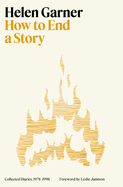
| Publisher: | Pantheon | |
| Genre: | Biography & Autobiography, Women, Literary Figures, Memoirs | |
| ISBN: | 9780553387490 | |
| Pub Date: | March 2025 | |
| Price: | $40 |
| Biography & Memoir |
by Helen Garner
To commit one's insecurities to a private diary is an act of bravery. To make that diary public is courage of an even greater order of magnitude. That's the gift Australian author Helen Garner (The Children's Bach) has given the world in the three diaries now collected into one magnificent 800-page volume titled How to End a Story. The first, "The Yellow Notebook," covers 1978-87, when Garner was married to her second husband, of whom she writes, "How lucky I am to be married to this lovely guy!" This good fortune lasts until their divorce and her affair with a married writer she calls V. The second volume, "One Day I'll Remember This," 1987-95, chronicles her marriage to V. The third volume, "How to End a Story," 1995-98, charts the dissolution of that marriage after V begins an affair with a painter referred to as X.
Amid accounts of trivial moments one would expect to see in a diary, such as teaching herself to embroider and buying a sprinkler, Garner confides in this brilliantly constructed account the personal and professional challenges she had to contend with during the period when she became an internationally celebrated author. She describes the rift her success caused in her marriage, her doubts about her writing abilities, and most terrifyingly, the discovery of a cyst on her ovaries. During an acute bout of uncertainty, she confides, "Each morning I set out for my office weak with fear. I will never be a great writer." Sorry to break the news, but she was wrong. --Michael Magras, freelance book reviewer
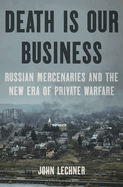
| Publisher: | Bloomsbury | |
| Genre: | Technology & Engineering, Guerrilla Warfare, Military Science, Geopolitics, History, World, Russian & Soviet, Military, Political Science | |
| ISBN: | 9781639733361 | |
| Pub Date: | March 2025 | |
| Price: | $29.99 |
| Political Science |
by John Lechner
The rise of private military companies across the world's battlefields is a return to history's norms--and it's not going away any time soon, contends journalist John Lechner in Death Is Our Business. "Private armies and mercenaries were the norm" until nation-states took over the work of warfare for the past two centuries, but Lechner argues that "private warfare is back." And to understand how soldiers of fortune are integrated into state-run wars, Lechner utilizes intrepid on-the-ground reporting to explore private military company the Wagner Group.
Through dozens of interviews with Wagner members, Lechner delves into the group's murky beginnings and the military undertakings of its "bulldozer" leader, Yevgeny Prigozhin, a former restaurateur and government contractor known as "Putin's Chef." Formed in 2014, the Wagner Group was sent into Ukrainian breakaway provinces to support local militias before moving on to flare-ups in Syria, Mali, the Central African Republic, and Ukraine again in 2022. Among Lechner's surprising revelations is Prigozhin's illegal recruitment of 26,000 Russian convicts to fight in Ukraine, and the 20,000 men who died in the "Bakhmut meat grinder" under Prigozhin's command. Prigozhin became "the greatest threat to Putin's twenty-year rule" when he turned his convoy toward Moscow in June 2023. He died in a plane crash in August 2023 that "every member of Wagner, every Russian citizen, and the rest of the world were convinced" was an assassination by "the Russian state." Death Is Our Business is a trenchant assessment of the Wagner Group's ongoing influence and impact around the globe. --Peggy Kurkowski, book reviewer and copywriter in Denver
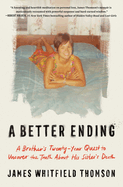
| Publisher: | Avid Reader Press/Simon & Schuster | |
| Genre: | Biography & Autobiography, Family & Relationships, True Crime, General, Murder, Memoirs, Siblings | |
| ISBN: | 9781668062869 | |
| Pub Date: | March 2025 | |
| Price: | $28.99 |
| Social Science |
by James Whitfield Thomson
With shrewd investigative skill, James Whitfield Thomson intimately explores the tragic, sudden death of his sister and its impact on his family and his own life in his spellbinding memoir, A Better Ending.
Thomson's sister, Eileen, the youngest of three siblings, was always a "happy, bubbly girl." However, in 1974, 27-year-old Eileen died from a self-inflicted gunshot wound to her heart. Her husband, Vic, was a police officer who had been her high school sweetheart and was home at the time of the shooting. Because of his parents' shattering, catatonic-like grief, Thomson's family trusted Vic's version of events and believed that Eileen had died by suicide.
Decades later, in 2001, Thomson felt compelled to revisit Eileen's death. By then an aspiring writer, Thomson initially set out to fictionalize Eileen's story, and then decided to hire a private investigator to dig for details. Together they evaluated police reports and spoke with a ballistics expert, and interviewed relatives, friends, and coworkers. Over the course of four years, Thomson unearthed harrowing, conflicting details that revealed questionable gaps in the official story, along with "choppy, slipshod, misdirected" evidence collection and police reporting. Thomson's labyrinthine quest to find the truth eerily concluded in 2005, when he met with Vic.
Thomson's meticulously re-created timeline charts an emotionally intensifying chronology that documents a dark, suspenseful, and chillingly sad story. In the end, the arduous path that Thomson travels to unravel the mystery of his sister's life and death urges him toward enlightenment, acceptance, and healing. --Kathleen Gerard, blogger at Reading Between the Lines
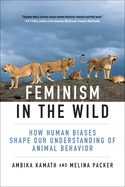
| Publisher: | The MIT Press | |
| Genre: | Life Sciences, Feminism & Feminist Theory, Science, Social Science, Zoology - Ethology (Animal Behavior) | |
| ISBN: | 9780262049634 | |
| Pub Date: | March 2025 | |
| Price: | $24.95 |
| Science |
by Ambika Kamath, Melina Packer
Evolutionary biologist and behavioral ecologist Ambika Kamath and race, gender, and sexualities professor Melina Packer (Toxic Sexual Politics) join forces in the astonishing Feminism in the Wild: How Human Biases Shape Our Understanding of Animal Behavior. They turn a queer, feminist, antiracist, and antiableist lens on the field of evolutionary biology and clearly demonstrate that the idea of objectivity in scientific endeavors is a myth, and that all scientific conclusions are products of political environments and ideological beliefs.
The book's focus is epistemological, asking how we know the things we know. For many people, questioning conclusions reached through the scientific method learned in primary school is almost unthinkable. But in a dynamic historical narrative, Kamath and Packer interrogate the formation of that foundational concept and lay out the political forces that built evolutionary biology as a eugenics-focused field from the beginning. The specific details of evolutionary biology are secondary to this central point, but they are fascinating, such as a discussion of scientists' attempts to explain the spotted hyena's unwieldy and impractical eight-inch-long clitoris, through which they give birth.
With clarity and obvious passion, the authors cover an impressive number of specialized topics, including optimality thinking, "survival of the fit enough," and co-constitution, which is the inseparability of multiple factors that shape scientific knowledge and evolution itself. References to other chapters throughout the book make it easy to flip back to related topics, and discussions of how other scientists changed their views after encountering paradigm-threatening anomalies allow readers to imagine their own understanding developing as well. --Dainy Bernstein, freelance reviewer
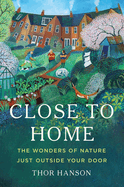
| Publisher: | Basic Books | |
| Genre: | Nature, Life Sciences, Environmental Conservation & Protection, Natural History, Science, General, Ecology | |
| ISBN: | 9781541601246 | |
| Pub Date: | March 2025 | |
| Price: | $30 |
| Starred | Nature & Environment |
by Thor Hanson
"It's often said that knowing more about nature leads to more caring about it." In Close to Home, biologist and John Burroughs Medal-winning natural history writer Thor Hanson (Hurricane Lizards and Plastic Squid) invites readers to discover the overlooked wonders in their own backyards.
Divided into three parts--Seeing (how to look), Exploring (where to look) and Restoring (how to help)--Close to Home is an accessible read, filled with fascinating facts, stories from the field, and Hanson's own experiences. An entrancing encounter with a Hutton's vireo, a hungry mother raccoon, and a camouflaged nest of eggs led Hanson to his epiphany that "familiarity invites its own revelations" and he soon realized that new discoveries--blooming wild bitter cherry trees and overlooked orchids--followed when he took the long route to a destination.
Close to Home contains inspiring examples of discovery by citizen scientists, such as the recreational scuba divers who found new jewel anemones in Singapore and the more than 40,000 people who have replaced their lawns with native flora, contributing to biodiversity in their neighborhoods. Hanson also shares the "long history of backyard contributions to the study of animal behavior," including discoveries by scientific great and "notorious homebody" Charles Darwin. Many of Darwin's experiments got their start from his daily neighborhood walks. It was there that he found a testing ground for his long-standing fascination with earthworms and made observations which would, eventually become his last published book.
"Humanity's great influence over natural systems gives us a caretaker's duty to safeguard them, and to protect the species that call them home," Hanson declares. This warm and optimistic book gives readers the tools to contribute to this stewardship. --Grace Rajendran, freelance reviewer
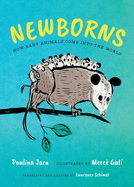
| Publisher: | Orca Book Publishers | |
| Genre: | Animals, Zoology, Baby Animals, Science & Nature, Juvenile Nonfiction | |
| ISBN: | 9781459840348 | |
| Pub Date: | March 2025 | |
| Price: | $24.95 |
| Starred | Children's & Young Adult |
by Paulina Jara, trans. by Lawrence Schimel, illust. by Mercè Galí
Chilean author Paulina Jara introduces budding readers to the diverse and amazing ways animal babies can be born in Newborns, a merry and creative picture book translated from the original Spanish by Lawrence Schimel. Jara includes mammals, fish, birds, and reptiles among the 25 creatures showcased and Spanish illustrator Mercè Galí's striking illustrations lend a singular aesthetic to the book.
Young audiences will likely be captivated by the array of fascinating information included in both text and illustration. There are frogs that hatch in their father's mouth and leave via "a narrow opening under his tongue," kangaroos that weigh "only as much as a paper clip" at birth, and cuckoo birds that throw smaller birds out of the nest to be the center of attention. Readers learn the terms for the baby animals (joeys, cubs, pinkies, pups, calves), their gestation periods, and other "wild" facts. A chart at the end of the book allows readers to compare the gestation periods of all the animals in the book.
Jara highlights how awash with variety and life the natural world is in this delightful collection. Galí uses a distinct, broken line in her illustrations which allows color to bleed out of the animals and onto the page, creating a sense of movement and activity. The highly stylized art is simple yet exudes texture and depth. Newborns is a beautiful introduction to the wonders of animal life in the natural world and makes the science of procreation accessible to young minds. A perfect way to start incubating a respect and appreciation for all lifeforms. --Jen Forbus, freelancer
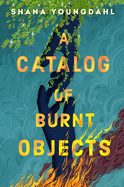
| Publisher: | Dial Books | |
| Genre: | Drugs, Alcohol, Substance Abuse, Family, Environment, Science & Nature, Social Themes, Marriage & Divorce, Young Adult Fiction | |
| ISBN: | 9780593405512 | |
| Pub Date: | March 2025 | |
| Price: | $19.99 |
| Starred | Children's & Young Adult |
by Shana Youngdahl
A Catalog of Burnt Objects is Shana Youngdahl's gut-wrenching, tender response to the 2018 Camp Fire that destroyed her hometown of Paradise, Calif.
Seventeen-year-old Caprice has been dealing with her "agent of chaos" older brother since she was 10. Now he's returned from a stint in rehab for substance use disorder and Caprice is not going to let him "unbalance [her] in all the ways he used to." She plans to focus on finishing the app she's developing and get into college--and maybe fall in love with the "smart, cute, and carbon neutral" boy who's just moved to her small California town. Then the unthinkable happens: a "fire-pocolypse." Ninety percent of her town is destroyed in a deadly fire and her grandfather is missing. Caprice starts "glitching out" when she blames herself for leaving her grandfather behind, and all her "if, if, if-ing" about the past has her reconsidering her future.
Youngdahl (As Many Nows as I Can Get) uses smart formatting choices in her deeply resonant second YA novel to evoke empathy and create tension: computer programming elements, like IF-THEN sequences, show Caprice both shutting down and coping with the tragedy; short chapters about the fire exemplify how fast a spark can explode. Stitched in between chapters are touching vignettes of townspeople talking about irreplaceable items they've lost (handmade quilt, house plants). An author's note shares Youngdahl's own experience with catastrophic wildfires and their wide-reaching impact, as well as a list of resources. Youngdahl's emotionally rich narrative is perfect for fans of Helena Fox. --Lana Barnes, freelance reviewer and proofreader

| Publisher: | Norton Young Readers | |
| Genre: | Drugs, Alcohol, Substance Abuse, Urban & Street Lit, Social Themes, Young Adult Fiction, Peer Pressure, Prejudice & Racism, Diversity & Multicultural | |
| ISBN: | 9781324052821 | |
| Pub Date: | March 2025 | |
| Price: | $18.99 |
| Children's & Young Adult |
by Rex Ogle
Author Rex Ogle (Free Lunch; Road Home) delivers a YA novel-in-verse as dynamic and affecting as his award-winning nonfiction in When We Ride, a portrayal of life on the margins told through the experiences of best friends traveling rapidly diverging paths.
Diego Miguel "Benny" Benevides is ranked 12th in his senior class and lives with his single mom in a neighborhood that "used to be nice/ like thirty years ago." Benny's mom works two jobs and vacillates between being a caring mother and struggling with her sobriety; it is her influence that has made Benny "the way I am/ always trying to be/ in control." Lawson Pierce has been Benny's best friend since third grade, when Lawson punched a bully making fun of Benny for not having a dad. Like Benny, Lawson is an only child with a single mom; unlike Benny, Lawson's mom is neglectful. So, Lawson turns to dealing drugs to support himself and his mother--but Benny is the one with a car. At first, Benny doesn't mind chauffeuring Lawson around town to conduct his "business" and he appreciates the extra money Lawson gives him "for [his] time." After a terrifying encounter with the police, though, Benny must decide if his future can afford Lawson's friendship.
When We Ride is written in spare, emotive verse that features realistic dialogue and approachable poetic forms. Ogle develops characters and relationships that are so sincere, their growths and losses will likely be both celebrated and mourned by readers. Fans of Jason Reynolds's Long Way Down or Elizabeth Acevedo's The Poet X will likely savor this moving novel. --Shannan L. Hicks, freelance reviewer
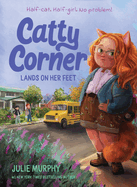
| Publisher: | Union Square Kids | |
| Genre: | Cats, Animals, Chapter Books, Fantasy, General, Social Themes, New Experience, Self-Esteem & Self-Reliance, Juvenile Fiction, Readers | |
| ISBN: | 9781454956488 | |
| Pub Date: | March 2025 | |
| Price: | $6.99 |
| Children's & Young Adult |
by Julie Murphy, illust. by Eve Farb
Librarian-turned-bestselling author Julie Murphy (Dumplin'; Puddin') and illustrator Eve Farb (Clovis Keeps His Cool) give young readers a comforting, lighthearted chapter book about a "half cat, half girl" named Catty.
Catty's half cat, half woman mother is about to start her "dream job at the fish cannery," meaning neither Catty's wholly human dad nor her mom will be home during the day. So Catty is going to attend school for the first time, and she is very nervous about third grade: "Would they like playing games, like throwing felt mice up in the air with their feet? What kind of naps did they take?" Although she knows the three big rules for time outside the house--"No hissing, no scratching, no biting"--school makes Catty skittish enough to break all three. Can Granny Tabby's beloved Scratch Pad diary help Catty calm down?
Murphy keeps an uplifting, animated tone in this first book (published simultaneously with Catty Corner Pounces into Action) in a new chapter book series. Not only are Catty's feelings acknowledged and respected by the adults around her, she's also given plenty of opportunities to cause innocent catastrophes. For example, when her teacher uses a laser pointer on a map, Catty jumps out of her seat and chases the dot around the classroom. Farb's full-color illustrations--both spot art and full-page bleeds--capture Catty's meow-titude perfectly, depicting the cat girl with a round face and ginger hair and tail; her images are full of both motion and emotion. A perfect blend of cats, humor, and paws-itivity. --Kharissa Kenner, library media specialist, Churchill School and Center